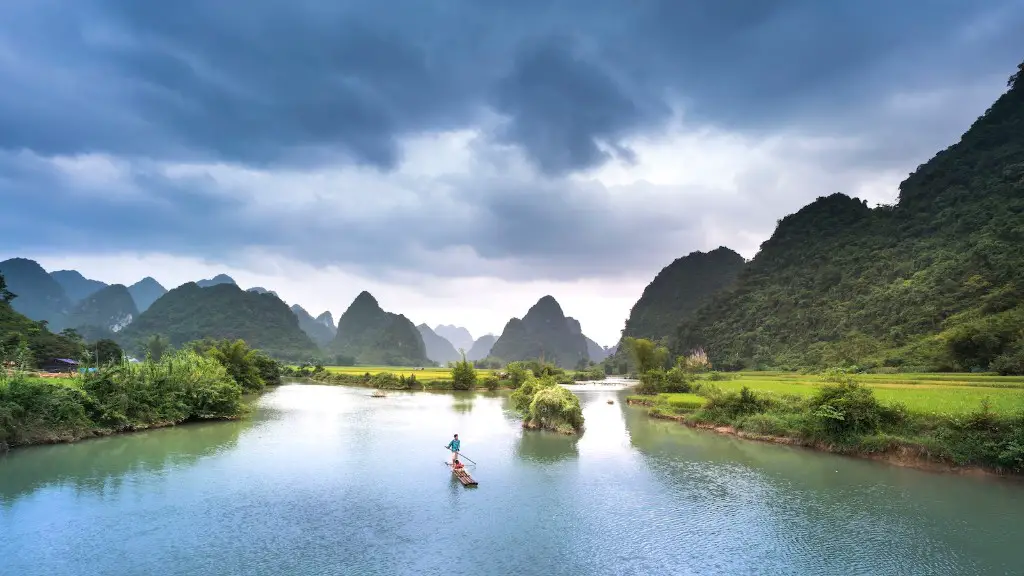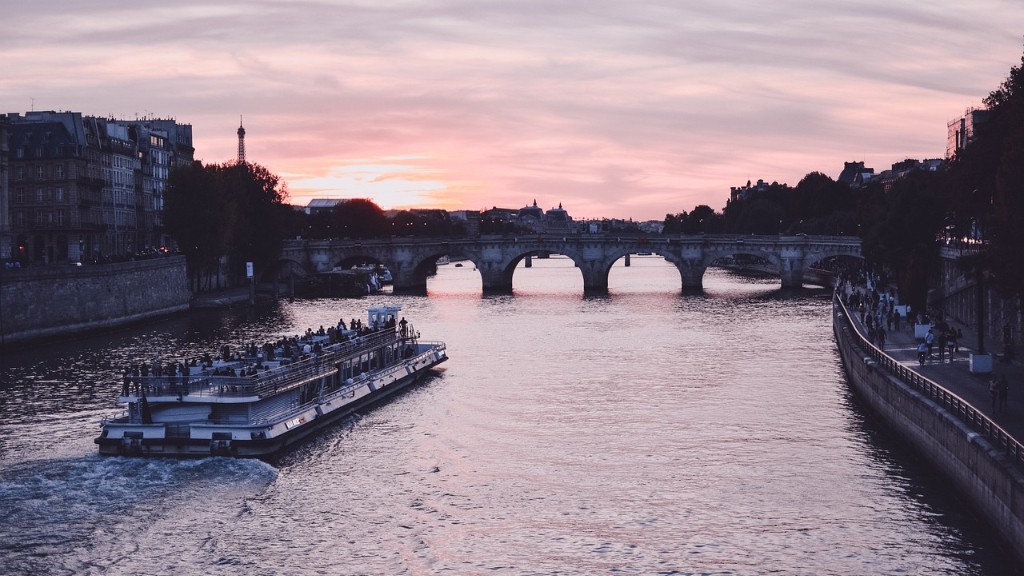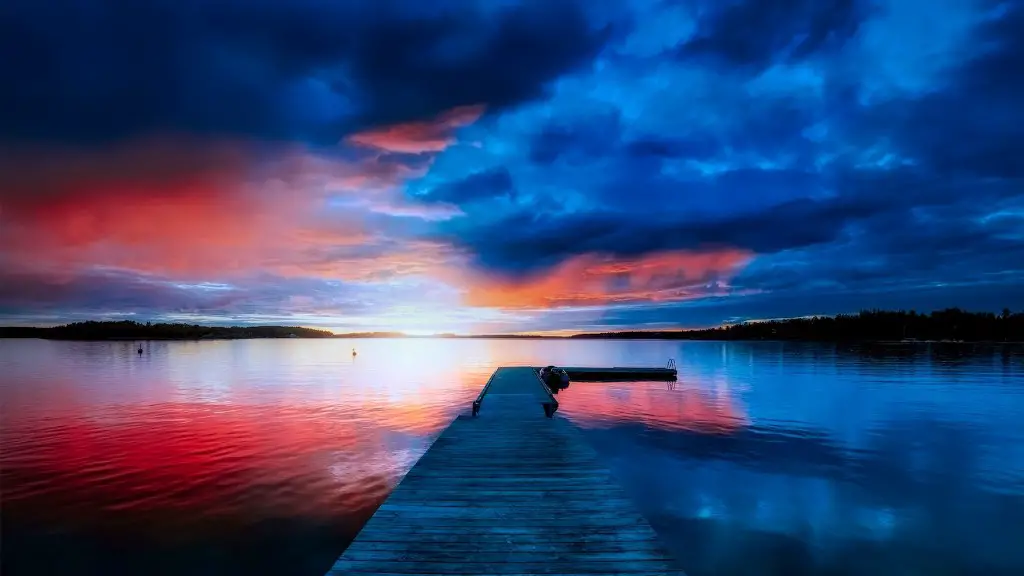The Amazon River is the world’s largest river by volume of water discharged, and it is one of the longest rivers in the world. The Amazon River flows through the Amazon rainforest, which is the world’s largest tropical rainforest. The river basin covers an area of more than 7 million square kilometers (2.7 million square miles), which is about 40 percent of the South American continent. The Amazon River has more than 3,000 species of fish, and it is an important source of food and income for the people who live along its shores. The Amazon River is also an important ecosystem, and it is home to many plants and animals, including some that are endangered.
-Humans protect the Amazon River by cleaning up pollution and working to conserve the rainforest.
What are people doing to protect the Amazon?
Reforesting is the process of planting trees in an area where there was once a forest. This can be done for many reasons, including restoring a lost forest, or creating a new one. Amazon Conservation has reforested degraded lands with over 250,000 trees to date, most through community-based reforestation projects in the Manu National Park buffer zone. This is a great example of how reforesting can help to restore lost forests, and create new ones.
The Amazon rain forest is one of the most important ecosystems on the planet. It is home to an incredible diversity of plant and animal life, and provides vital ecosystem services such as regulating the global climate and water cycles. However, this unique ecosystem is under threat from human activities. Mining, logging, ranching, agriculture, and oil and gas extraction have put unsustainable pressure on the rain forests of the Amazon Basin. If this trend continues, the Amazon rain forest will be irreversibly damaged, with devastating consequences for the planet.
How can we save the Amazon from deforestation
There are many ways that you can help to save the rainforest. Some things you can do include:
1. Eliminate deforestation from your diet by choosing responsibly sourced products.
2. Choose products that give back to support indigenous communities.
3. Reduce your carbon footprint to help reduce the amount of greenhouse gases in the atmosphere.
4. Email your preferred news outlet to keep them informed about the issue.
5. Get involved politically to help support policies that protect the rainforest.
The Amazon is an important natural area that needs to be protected for the future of our planet. Amazon Conservation has been working to protect this area for over 20 years and now more than ever, there is an urgent need to continue this work. The Amazon is home to many different species of plants and animals, and it is vital to their survival that we protect this area. We need to continue to work together to ensure the Amazon is preserved for future generations.
What is being done to save the rainforest?
Restoring damaged ecosystems is essential to mitigating the effects of climate change and preserving biodiversity. Planting trees is one of the most effective ways to restore a damaged ecosystem. Trees help to stabilize the soil, prevent erosion, and provide habitat for wildlife. Encouraging people to live in a way that doesn’t hurt the environment is also crucial. This means reducing our reliance on fossil fuels, conserving water, and reducing waste. Establishing parks to protect rainforests and wildlife is another important step in preserving our planet’s precious resources. Finally, supporting companies that operate in ways that minimize damage to the environment is essential to creating a sustainable future.
The World Wildlife Fund (WWF) has been working in the Amazon for 40 years to protect the people, forests, and species that call it home. The Amazon is a vital part of the Earth’s ecosystem and is home to many unique plant and animal species. WWF is committed to conserving the Amazon and its inhabitants.
How do humans positively impact the rainforest?
Reforestation is the act of planting trees in an area where trees have been cut down. This can help to restore the ecosystem in the area and provide much-needed habitat for wildlife. Recycling is another important way to help the environment. Recycling waste instead of dumping it in landfill sites reduces the amount of waste that needs to be disposed of, and it also helps to conserve resources.
Deforestation can cause major changes to local and regional rainfall patterns. In particular, the loss of trees can lead to less water being evaporated from the ground and returned to the atmosphere, which can further dry out the forest. Deforestation can also contribute to increased flooding, as trees and other vegetation help to slow the flow of water. Additionally, the construction of dams and other water infrastructure can release the potent gas methane, which can contribute to climate change. Cattle ranching is another major reason why forests are destroyed, as it leads to the clearing of vegetation and the release of methane. Roughly 35 percent of all methane released globally comes naturally from the Amazon’s trees.
Did humans plant the Amazon rainforest
The new research shows that small-scale communities in the Amazon began to shape the landscape 8,000 years earlier than previously thought. The mounds promoted landscape diversity and show that these communities were some of the earliest centers of plant domestication in the world. This research is important in understanding the history of human impact on the environment and how different cultures have adapted to their surroundings.
When it comes to forests, we all have a part to play in promoting sustainable choices. By consuming less, avoiding single-use packaging, eating sustainable food, and choosing recycled or responsibly-produced wood products, we can all help make a difference. Every little bit counts when it comes to protecting our planet’s forests – so let’s all do our part!
What are 3 ways to stop deforestation?
You can help reduce deforestation by taking some simple steps in your daily life:
-Plant a tree where you can
-Go paperless at home and in the office
-Buy recycled products and then recycle them again
-Buy certified wood products
-Support the products of companies that are committed to reducing deforestation
The Amazon rainforest is critical for stabilizing the global climate. The trees in the Amazon store vast amounts of carbon, and release large amounts of water into the atmosphere each day. This water vapor helps to regulate the global and regional climate.
How much of Amazon is protected
This is good news! Almost half the Amazon has been designated either a protected area or Indigenous territory, which means that only 14% of all deforestation takes place there. This is a huge win for Indigenous people and the environment. However, there are still 100m hectares of Indigenous land that are under dispute or awaiting formal government recognition. We need to keep fighting for the protection of these lands and the people who live on them.
If the Amazon rainforest were to vanish, the animals, plants and humans that rely on it would all face dire consequences.
The Amazon is the largest tract of continuous rainforest on the planet, and it plays a critical role in the Earth’s climate system. If it were to vanish, the impact would be felt around the world.
Animals that rely on the Amazon for habitat would be among the hardest hit. The forest is home to an estimated 10% of the world’s known species, including many that are found nowhere else.
Plants would also suffer, as the Amazon is a key provider of oxygen and helps to regulate global temperature.
And humans would feel the effects as well. The loss of the Amazon would cause widespread drought and could lead to a rise in sea levels.
The Amazon is a vital part of our world, and its disappearance would be a catastrophe for all of us.
How much of the Amazon is protected 2022?
It is encouraging to see that 51 percent of the Brazilian Amazon rainforest is now considered protected land. This area is essential to the health of our planet, and it is critical that we work to conserve it. There are many ways to get involved in this effort, and every little bit counts.
Developed nations need to find a way to satisfy their demand for minerals and metals without destroying rainforests. One way to do this would be to invest in recycling and reusing materials instead of mining for new ones. Another way would be to develop new technologies that can extract minerals and metals from other sources, such as seawater.
What if we lost the Amazon rainforest
The destruction of the Amazon rainforest would have a number of negative consequences for the global climate. Warmer temperatures would lead to more frequent floods and droughts, and the gradual decrease in rainfall would increase the pest and infection. Less water would minimize the resources of sowing and maintaining crops.
We can protect forests by regulating and planned cutting of trees, controlling over forest fires by adopting the latest techniques of fire fighting, reforestation and afforestation, checking over forest clearance for agricultural and habitation purposes.
Final Words
There are many ways that humans can protect the Amazon River. One way is to help preserve the rainforest. The Amazon rainforest helps to regulate the local climate and provides a home for many different plant and animal species. Another way to protect the Amazon River is to reduce pollutants and other waste that is dumped into the river.
There are many ways in which humans protect the Amazon River. One way is by working to prevent pollution and contamination of the river. Another way is by working to restore and protect the river’s natural habitat.





